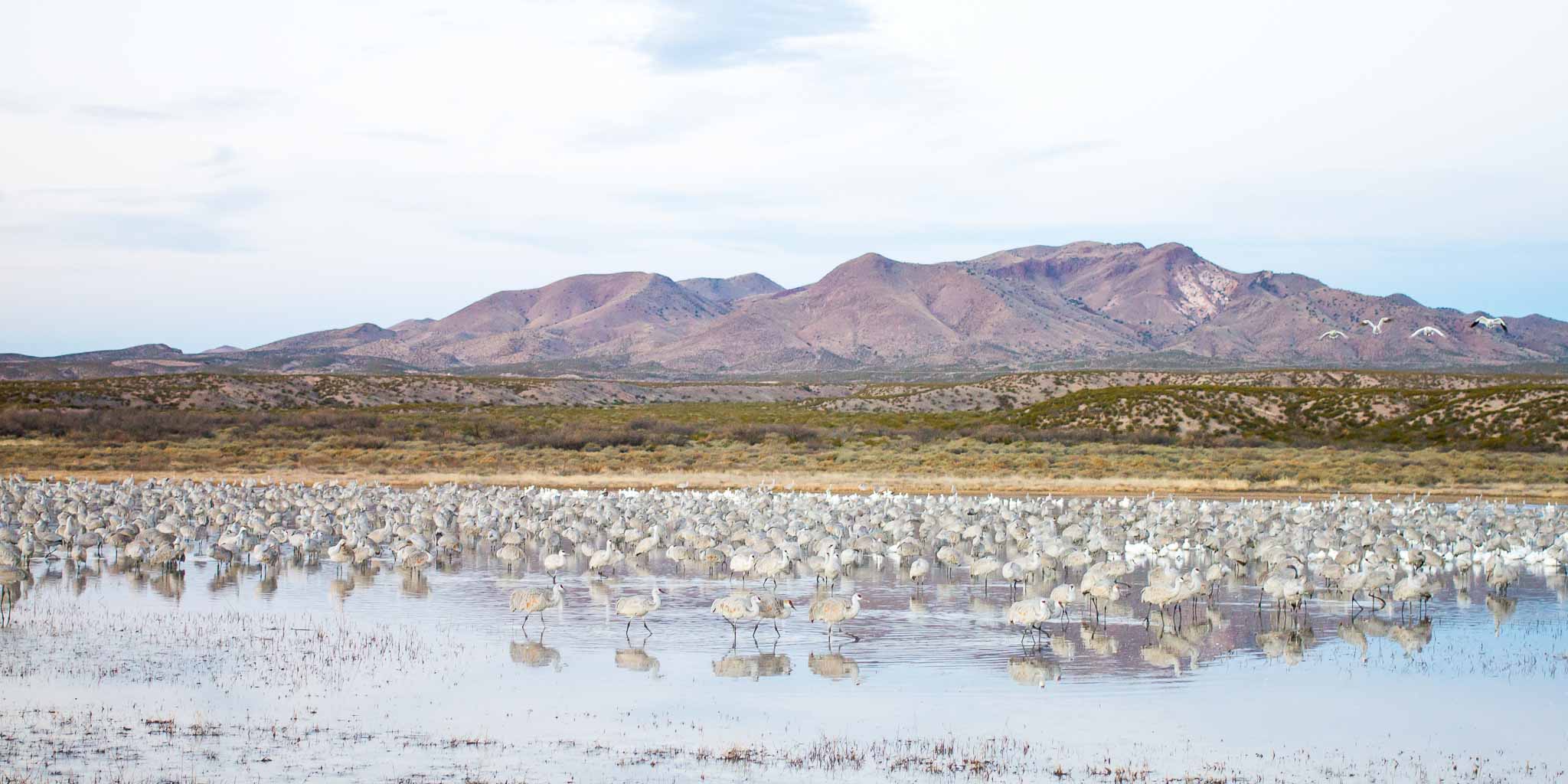Bosque del Apache National Wildlife Refuge
The Bosque del Apache National Wildlife Refuge in southern Socorro County, New Mexico, lies in the Albuquerque Basin, along the Rio Grande River.
The wetlands attract huge flocks of wintering cranes, geese, and many other species of waterfowl, shorebirds, and birds of prey.
I've spent considerable time the last few winters photographing at the Bosque and most of the images in these collections were shot there.
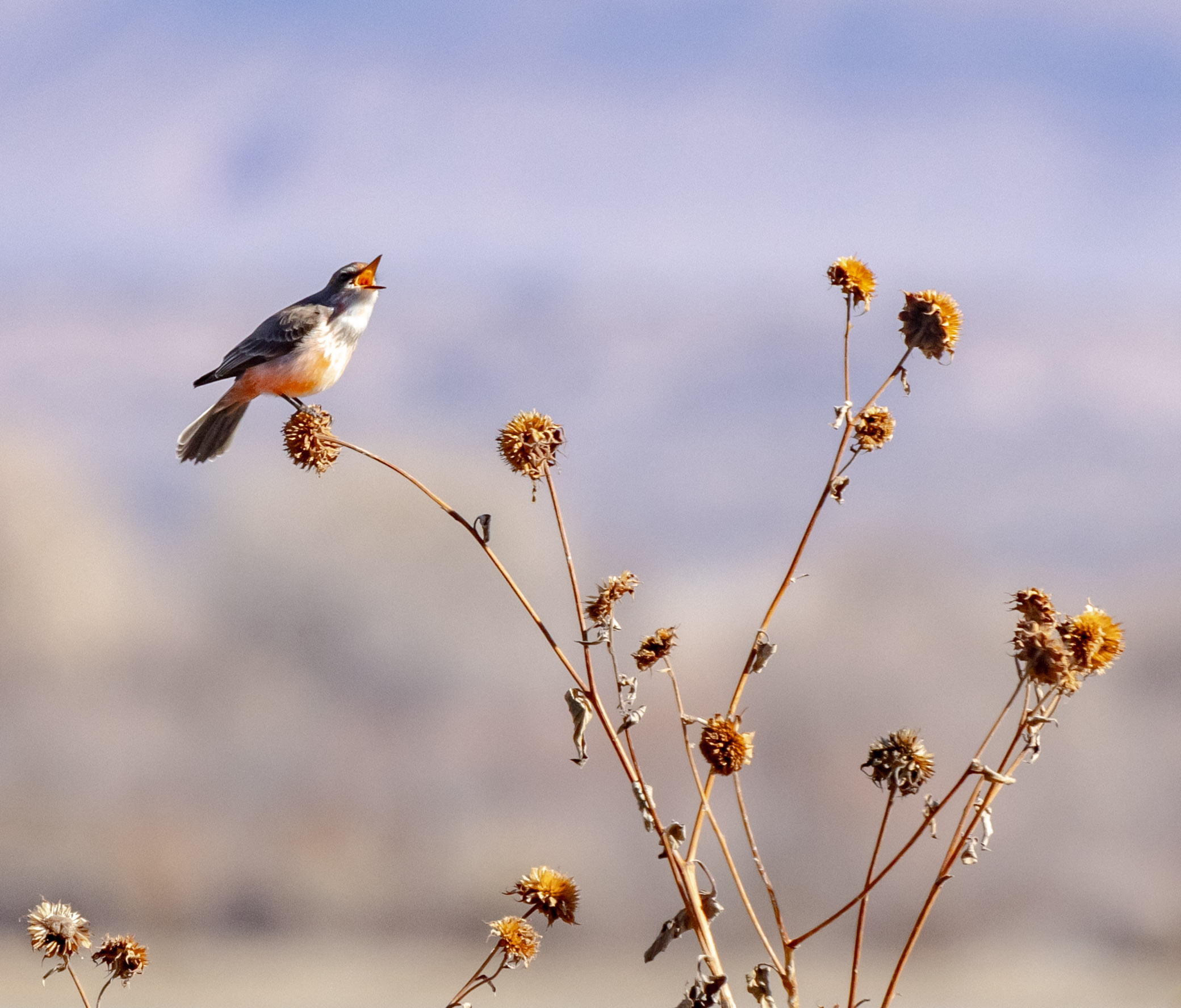
Come Fly With Me
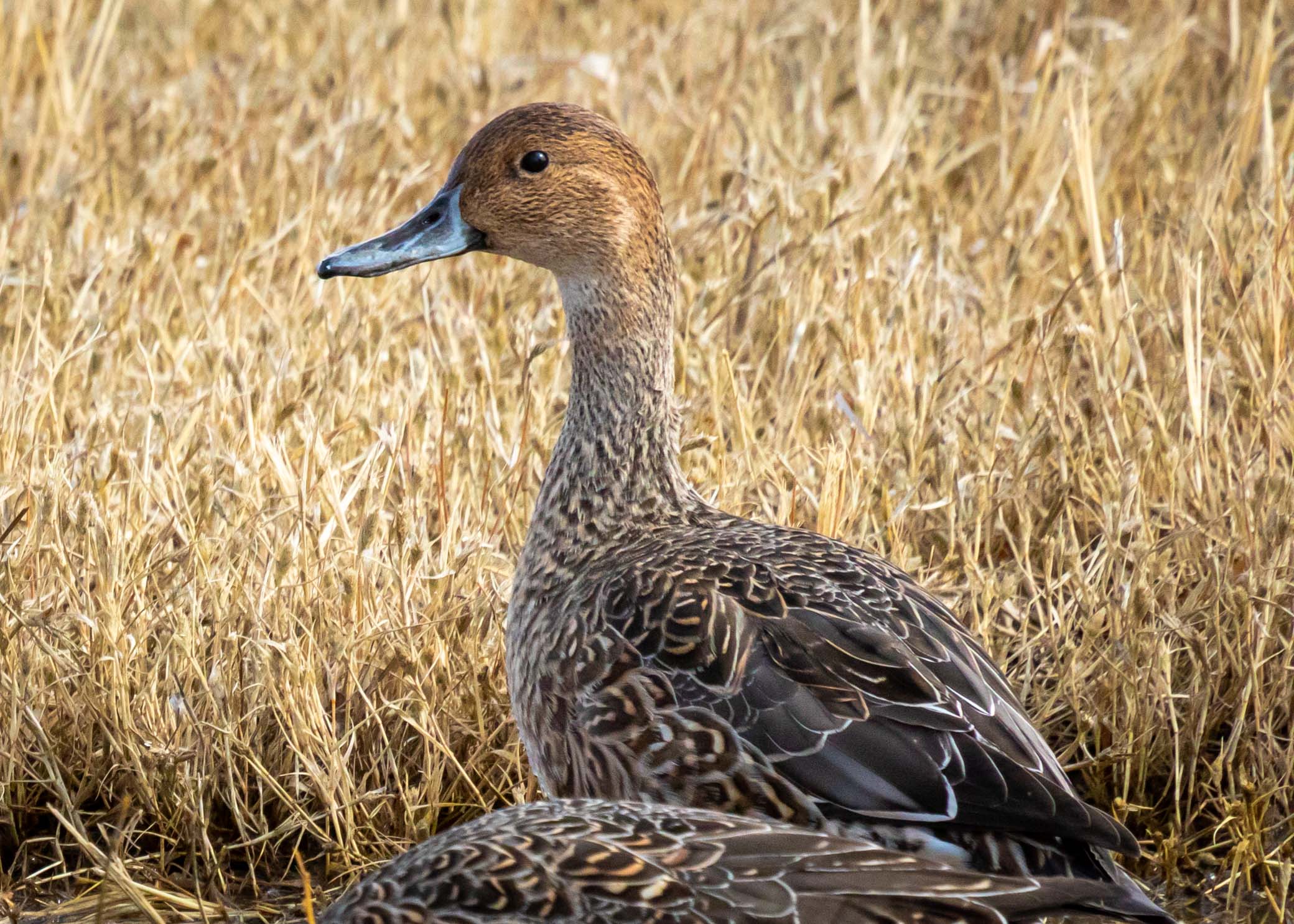
Northern Pintail - Female

May 2017 Rest in Peace
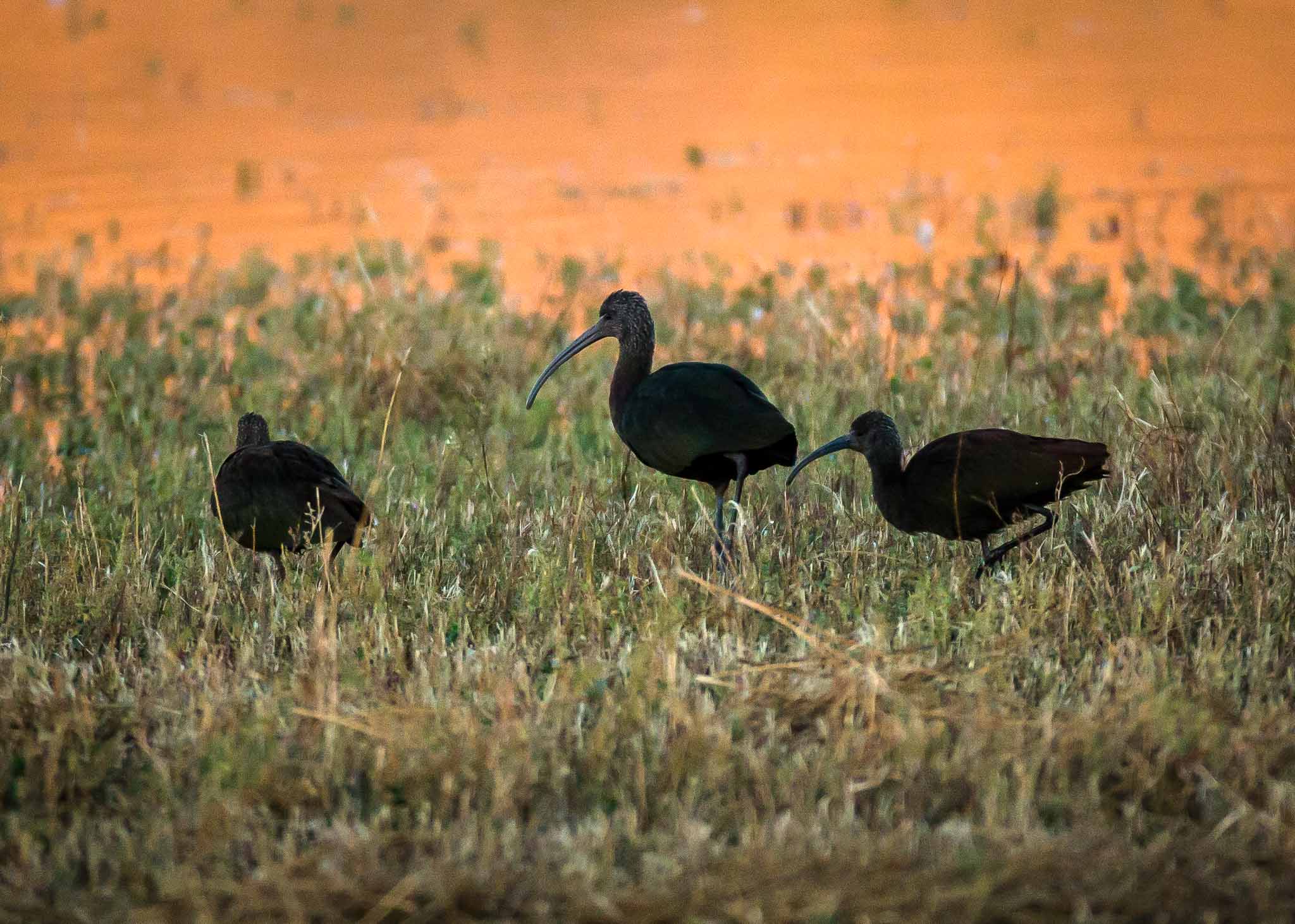
Breakfast at Dawn
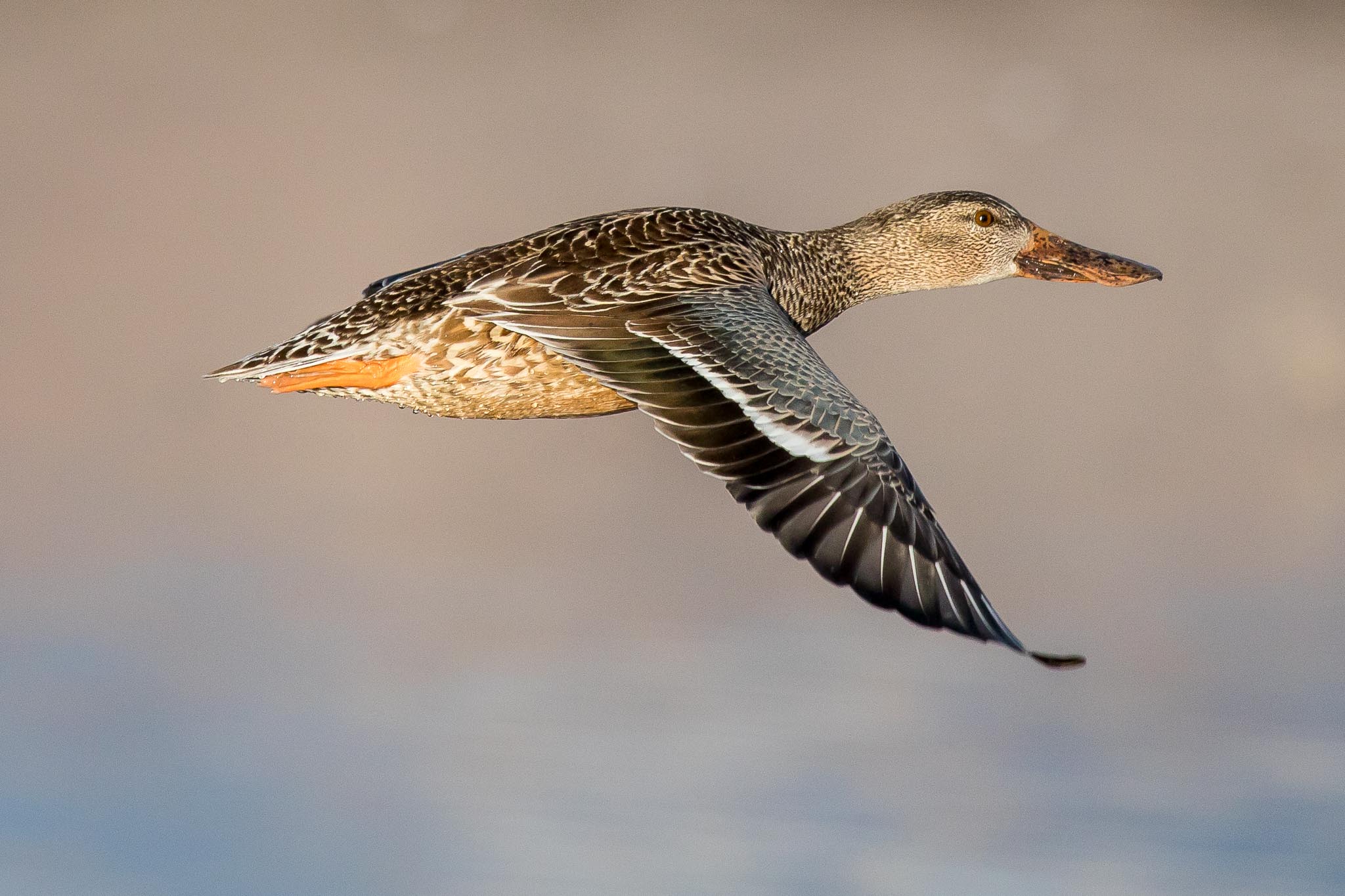
Flying Low
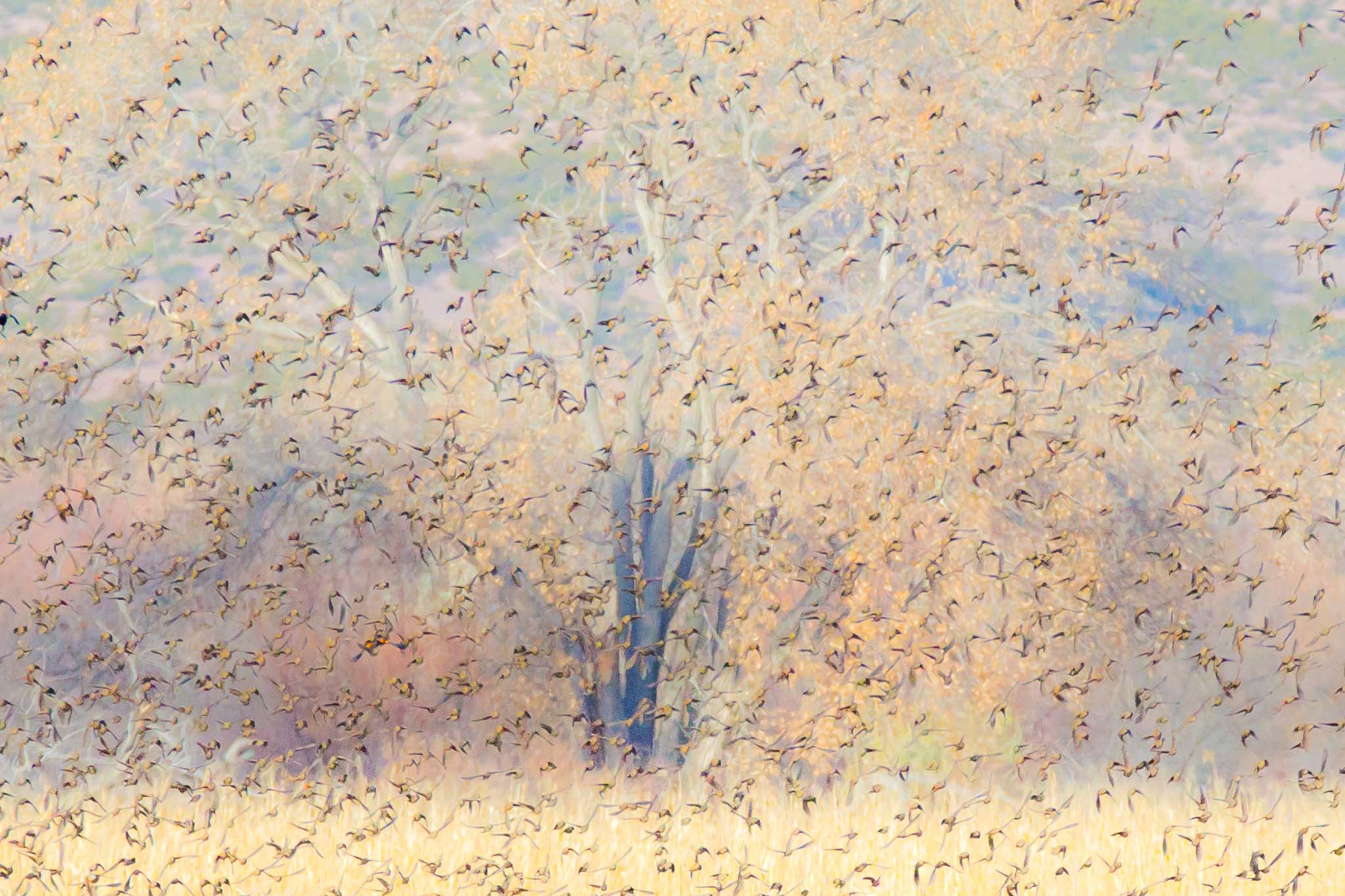
Four and Twenty
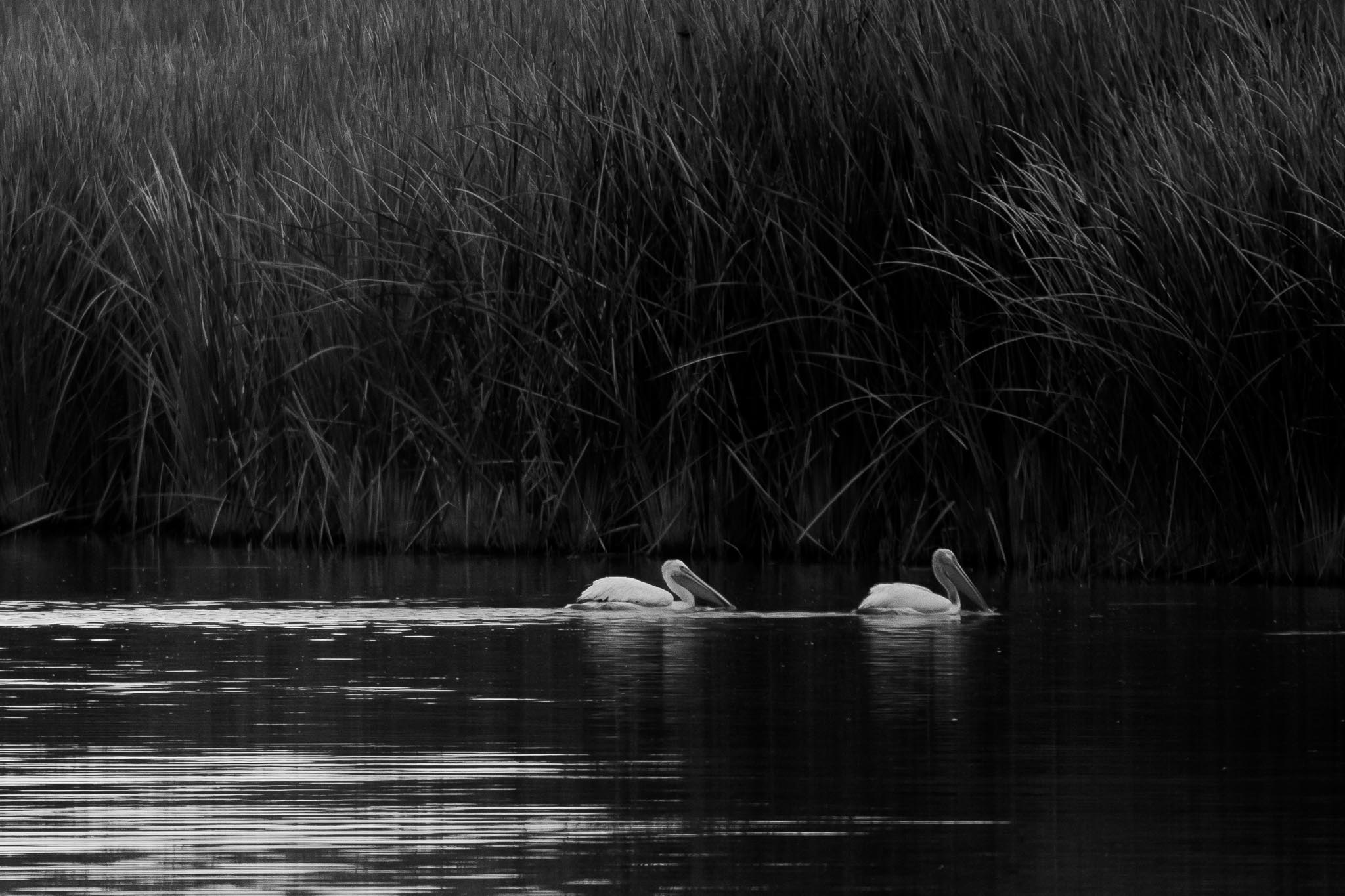
Daybreak at the Boardwalk
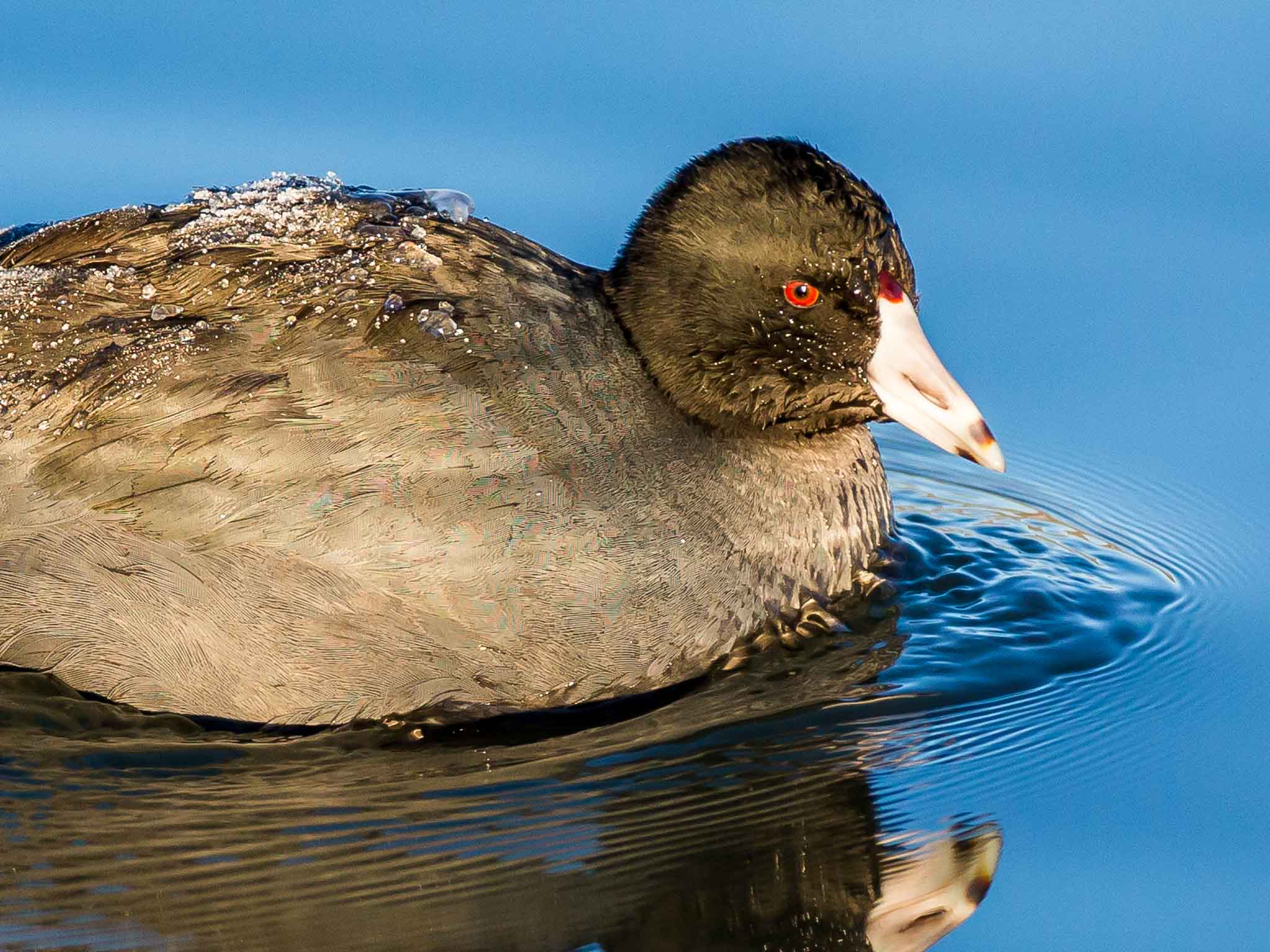
Call Me Frosty
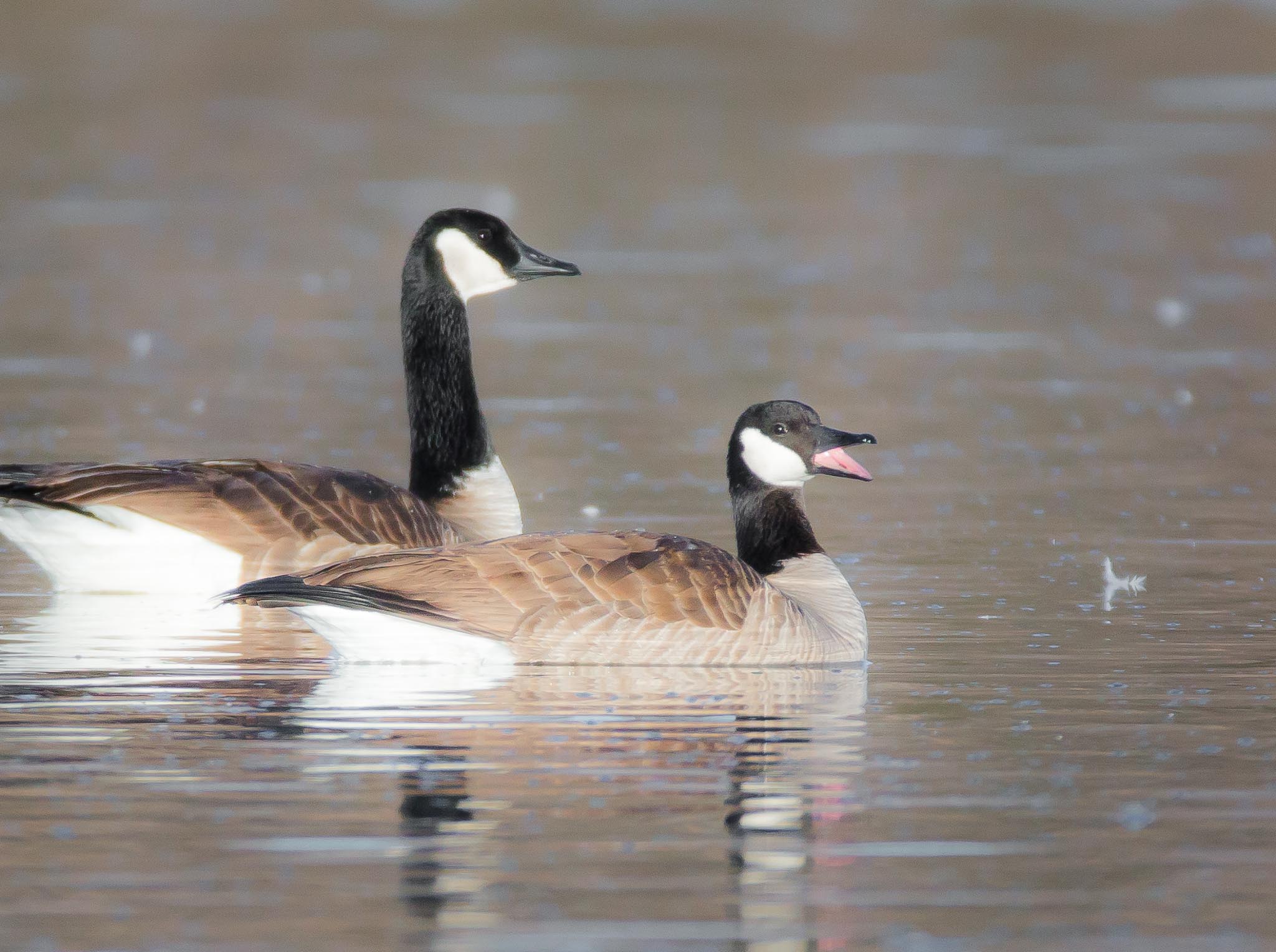
[insert snarky caption here]
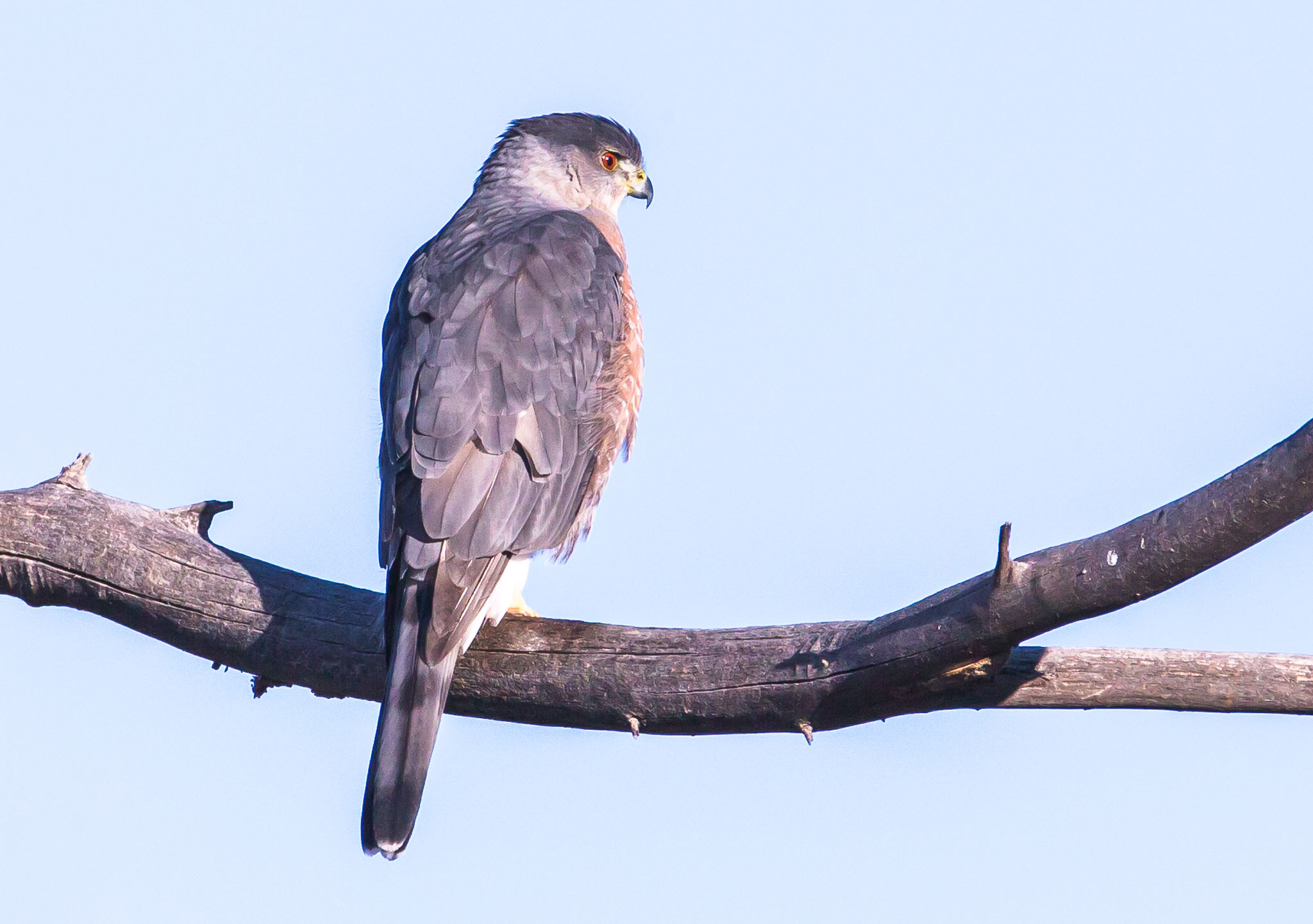
Cooper's Hawk
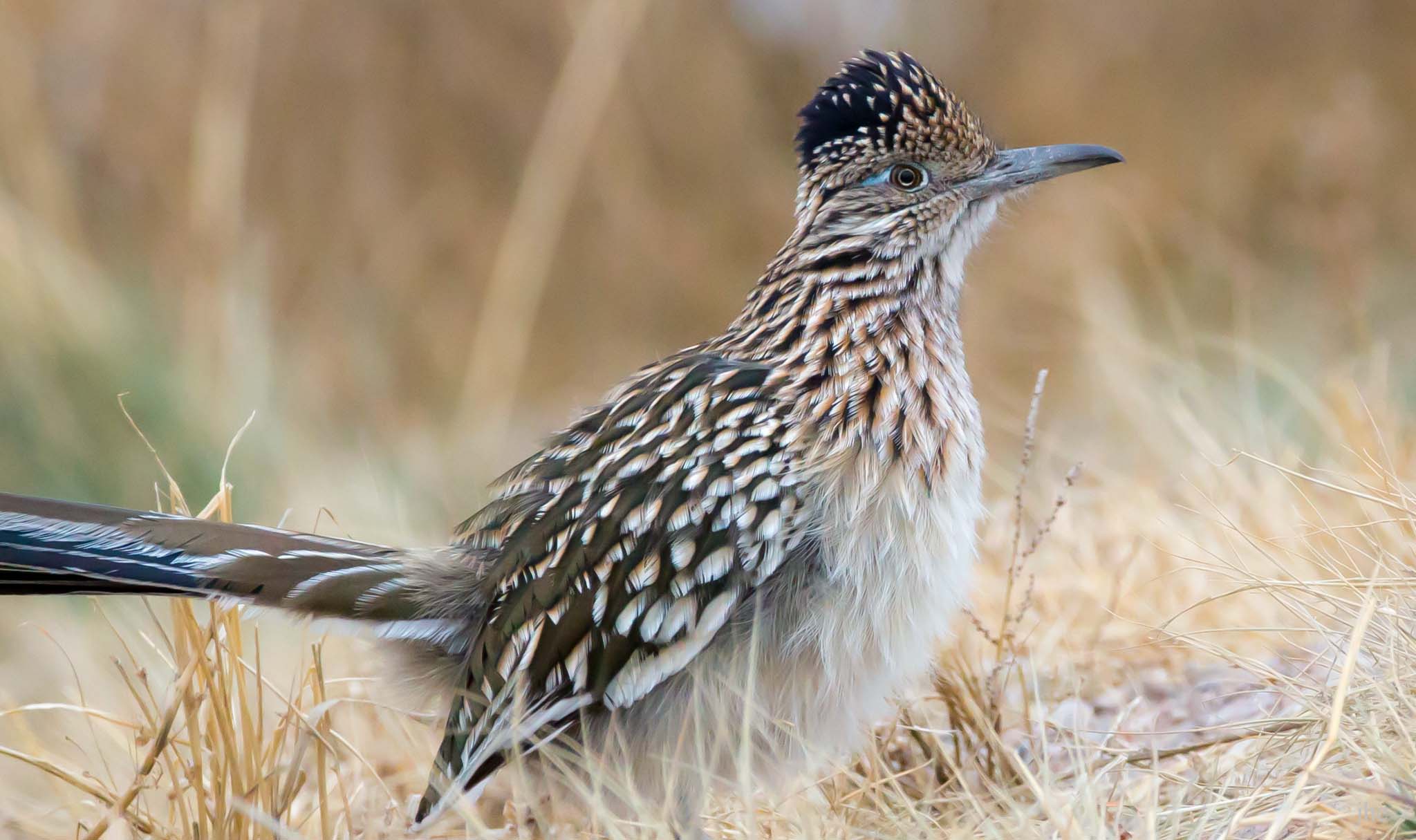
Greater Roadrunner, A Portrait
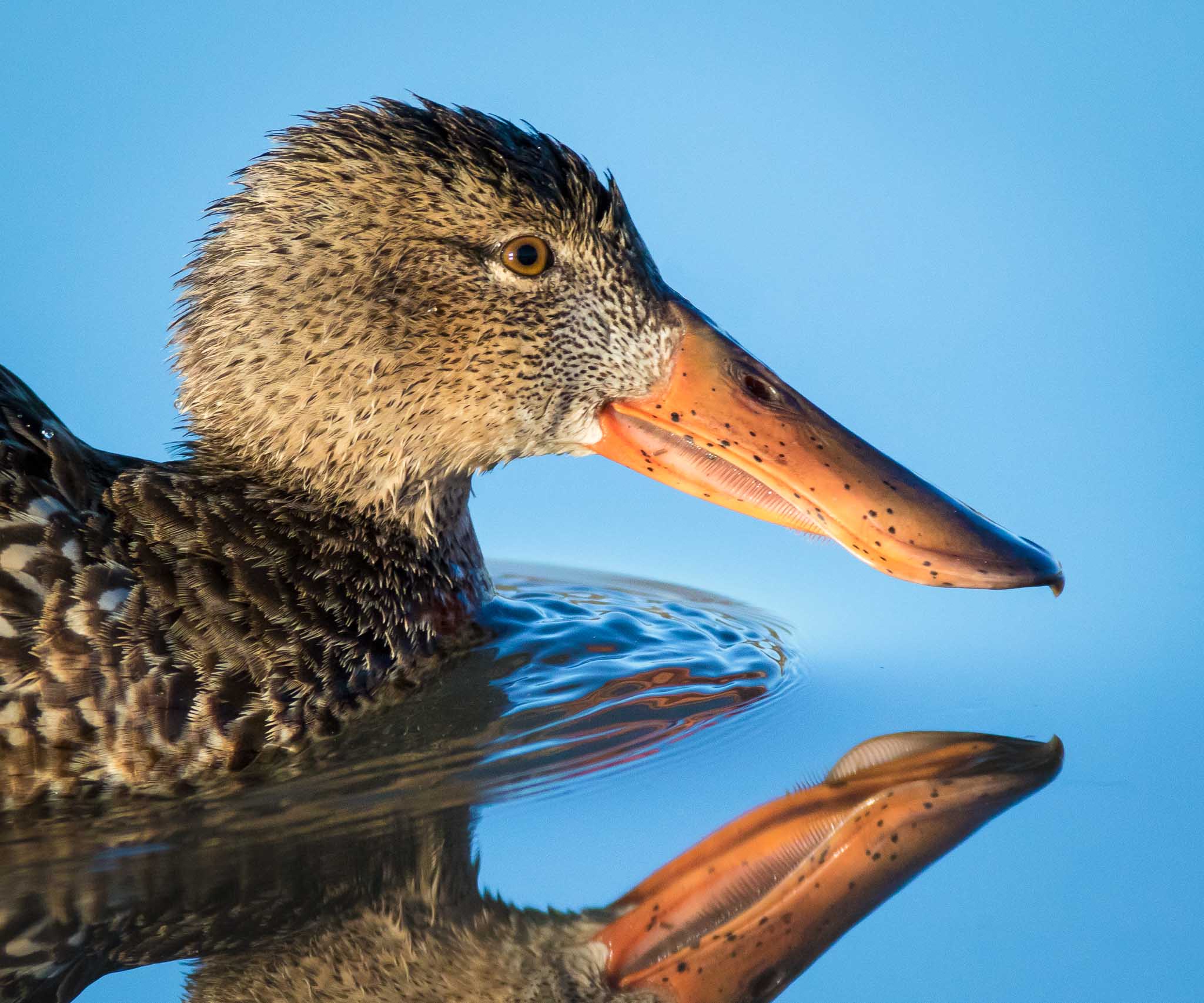
Northern Shoveler, Adult Female, A Portrait
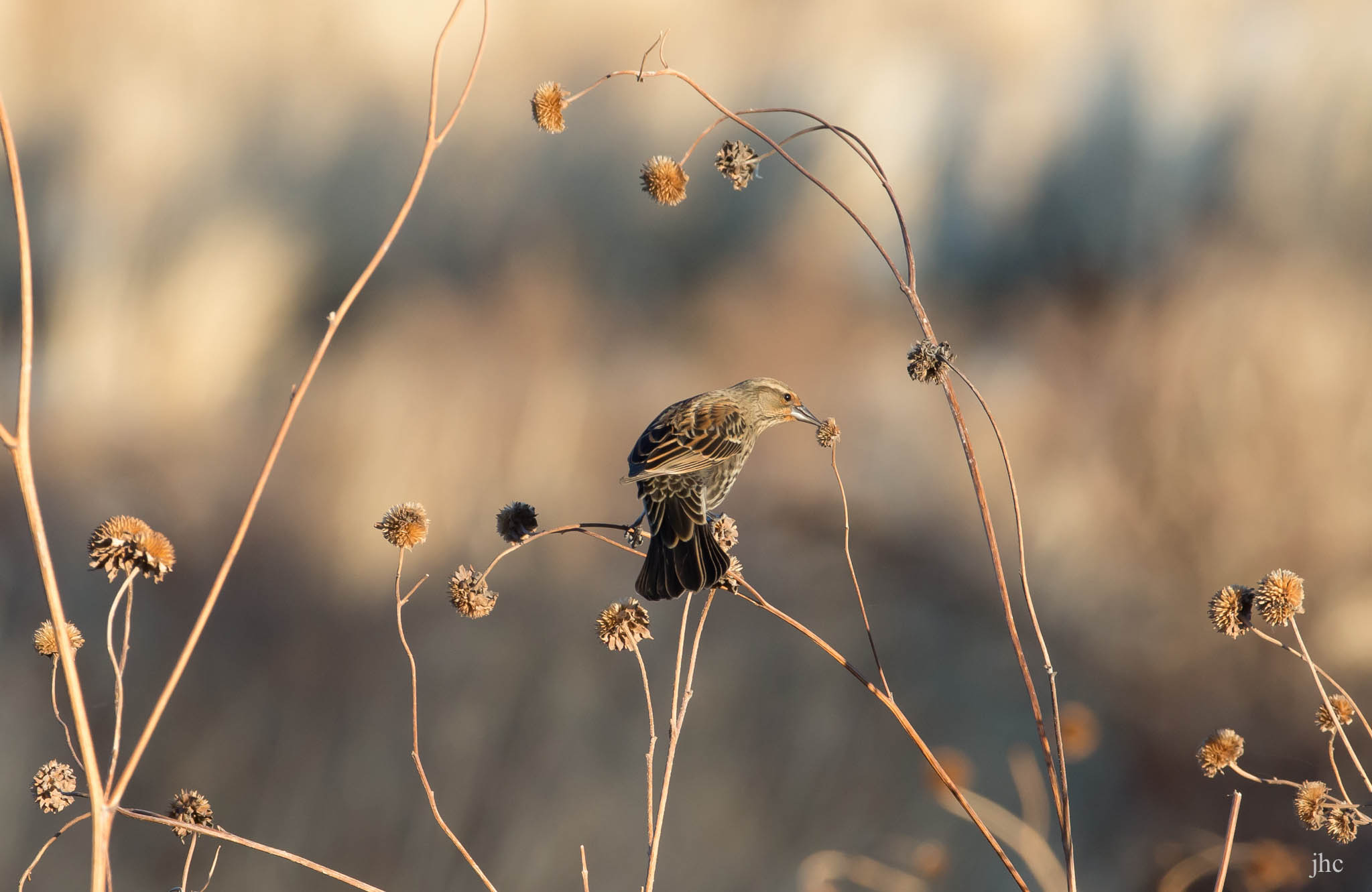
Smell the Roses
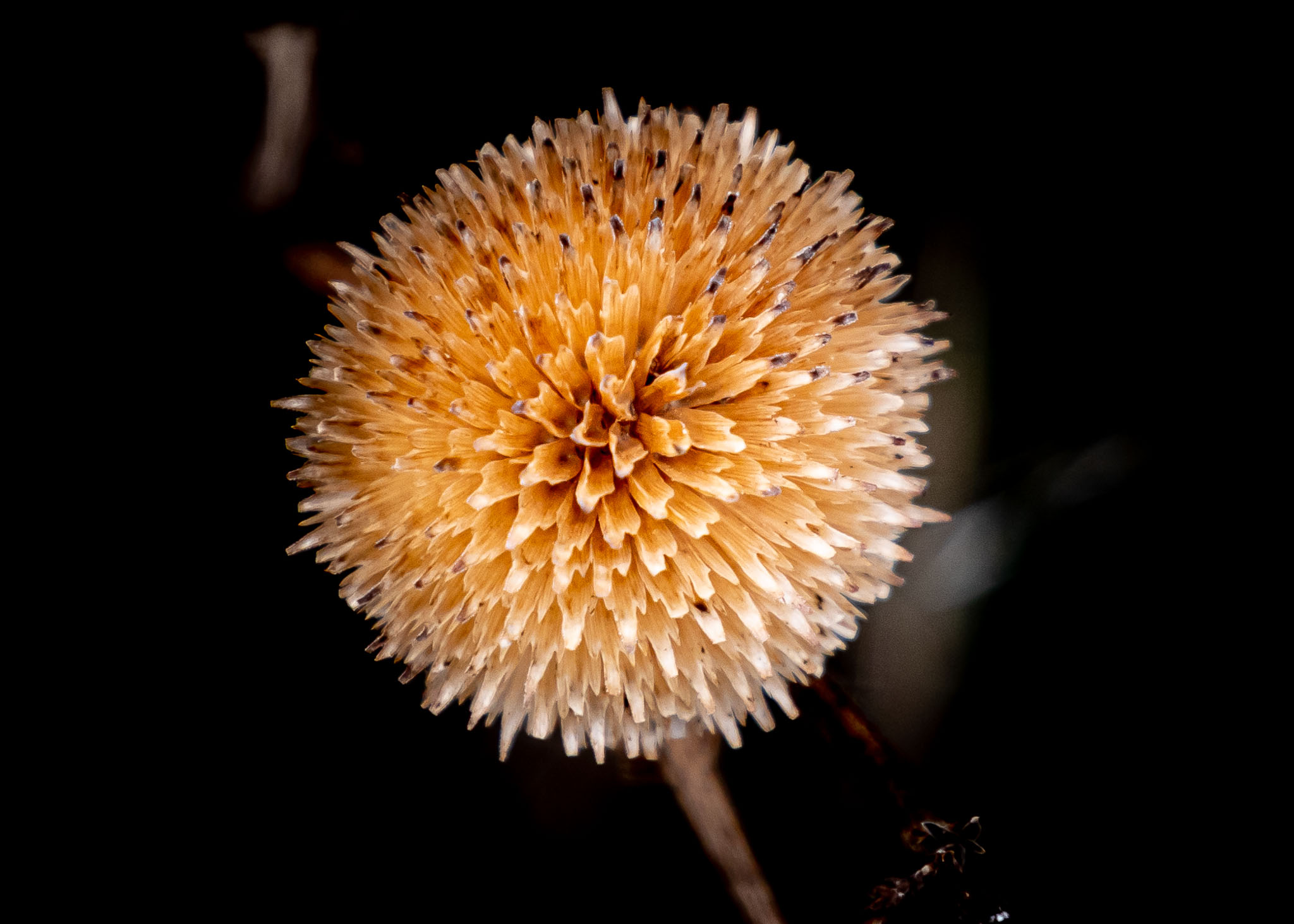
Seedhead
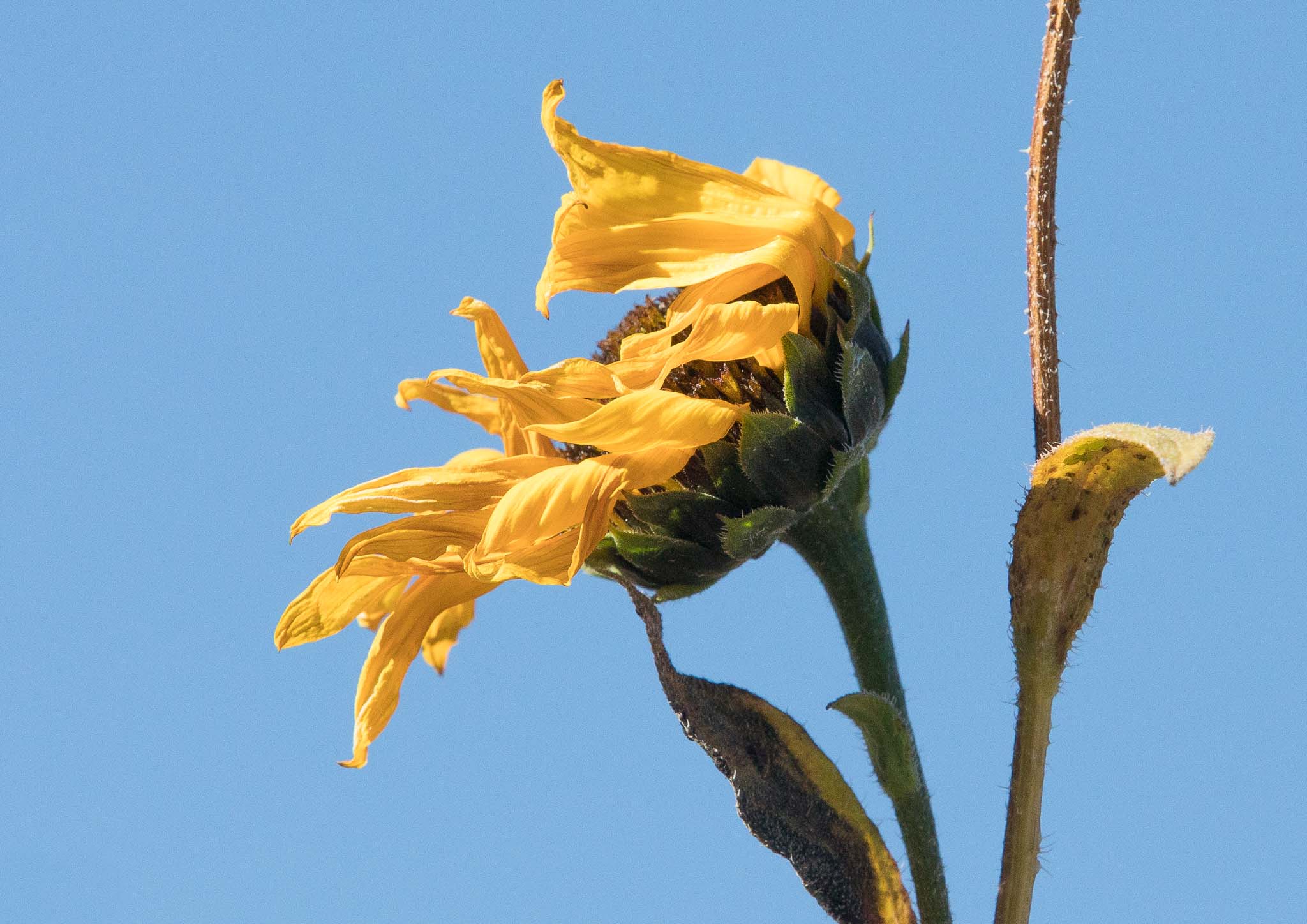
Faded Glory
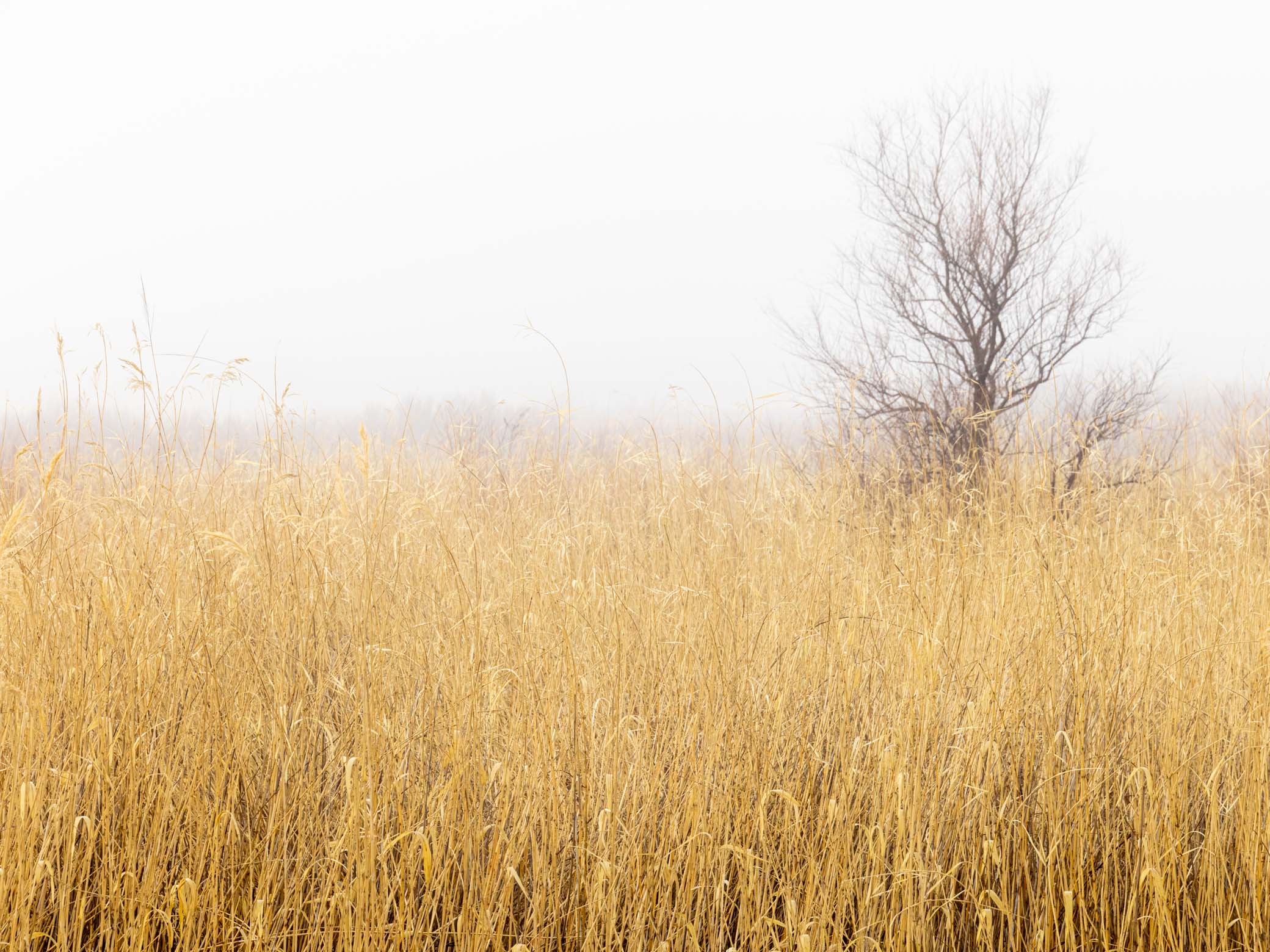
Above and Beyond
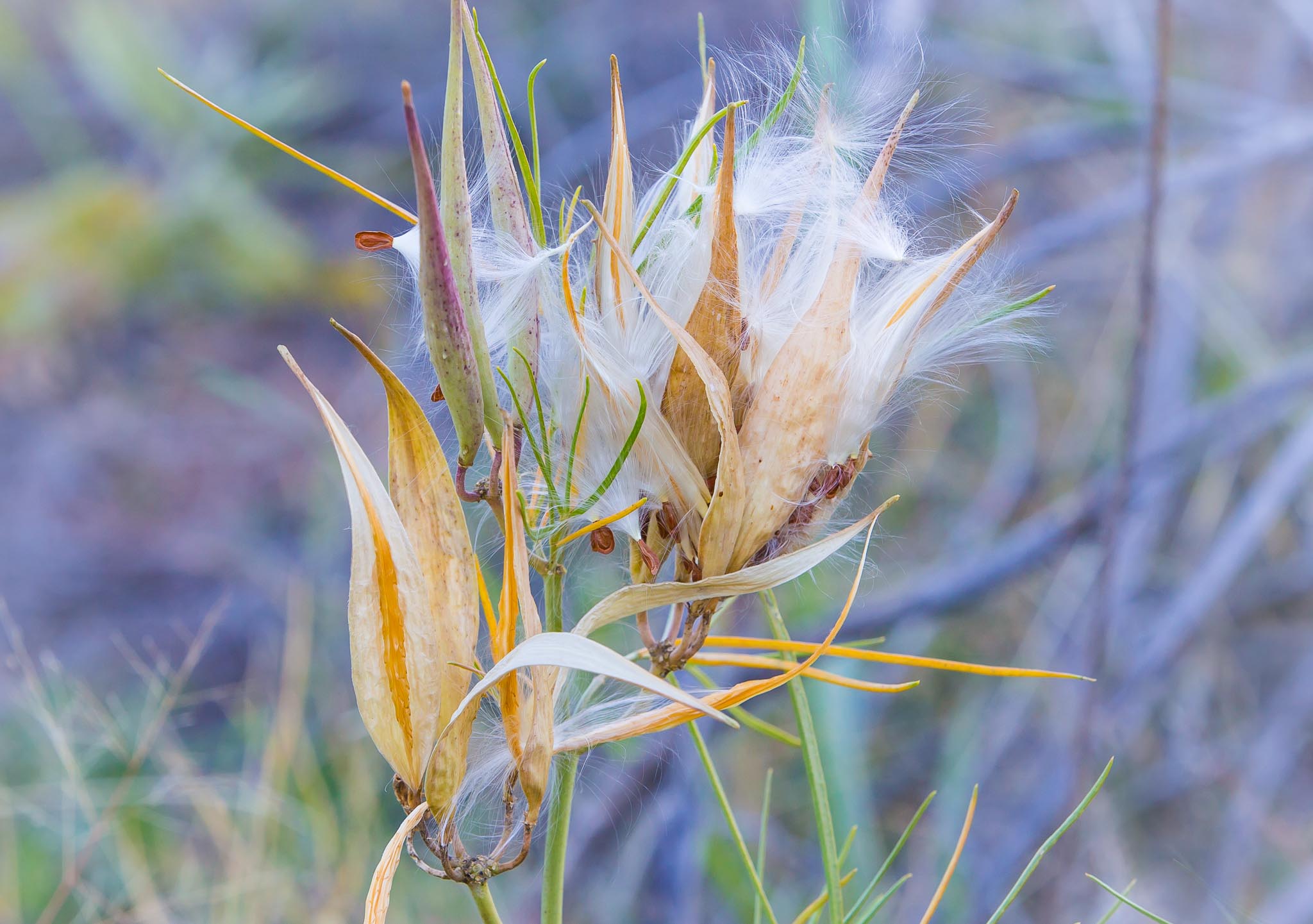
Fall Release
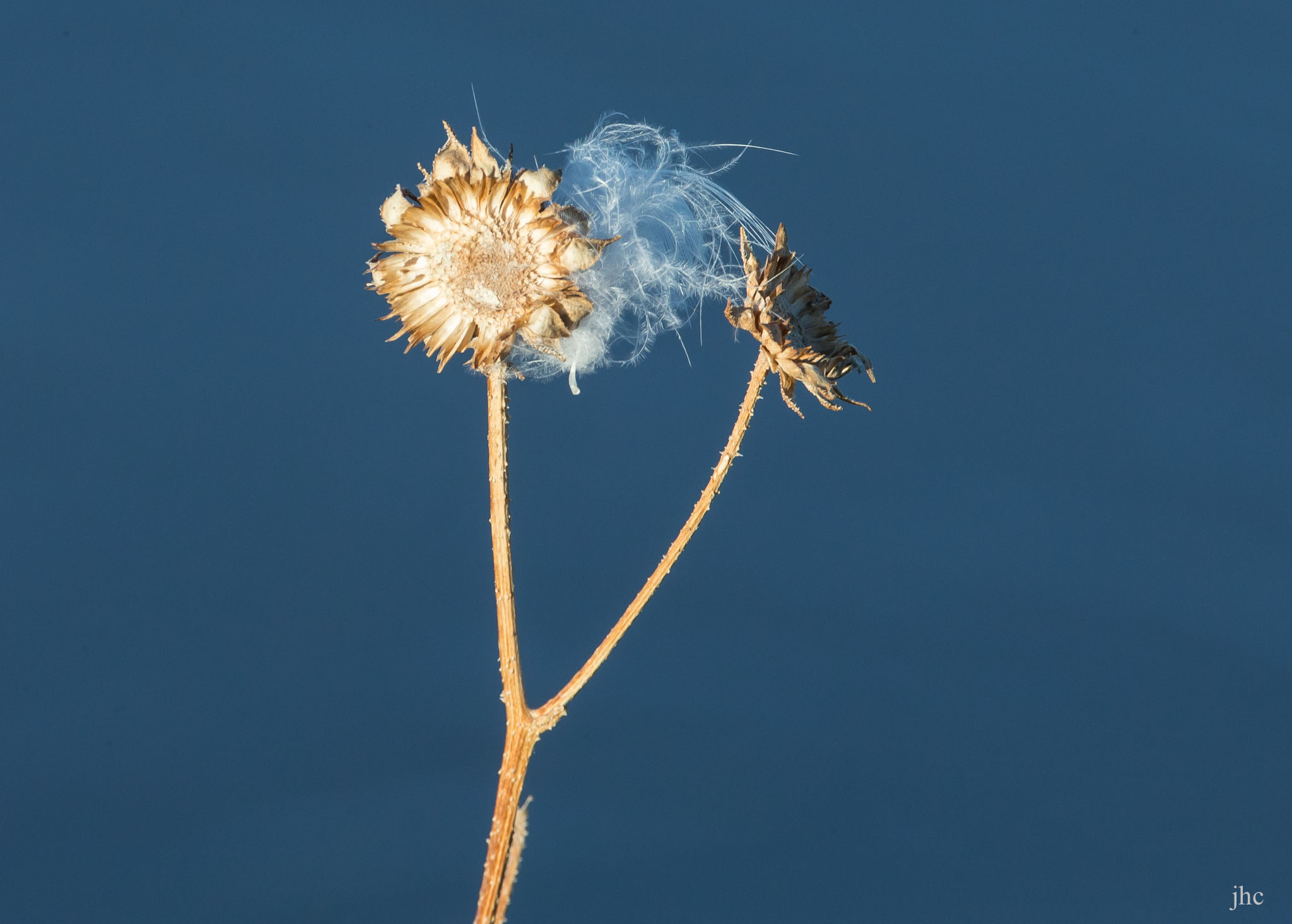
Down by the Pond
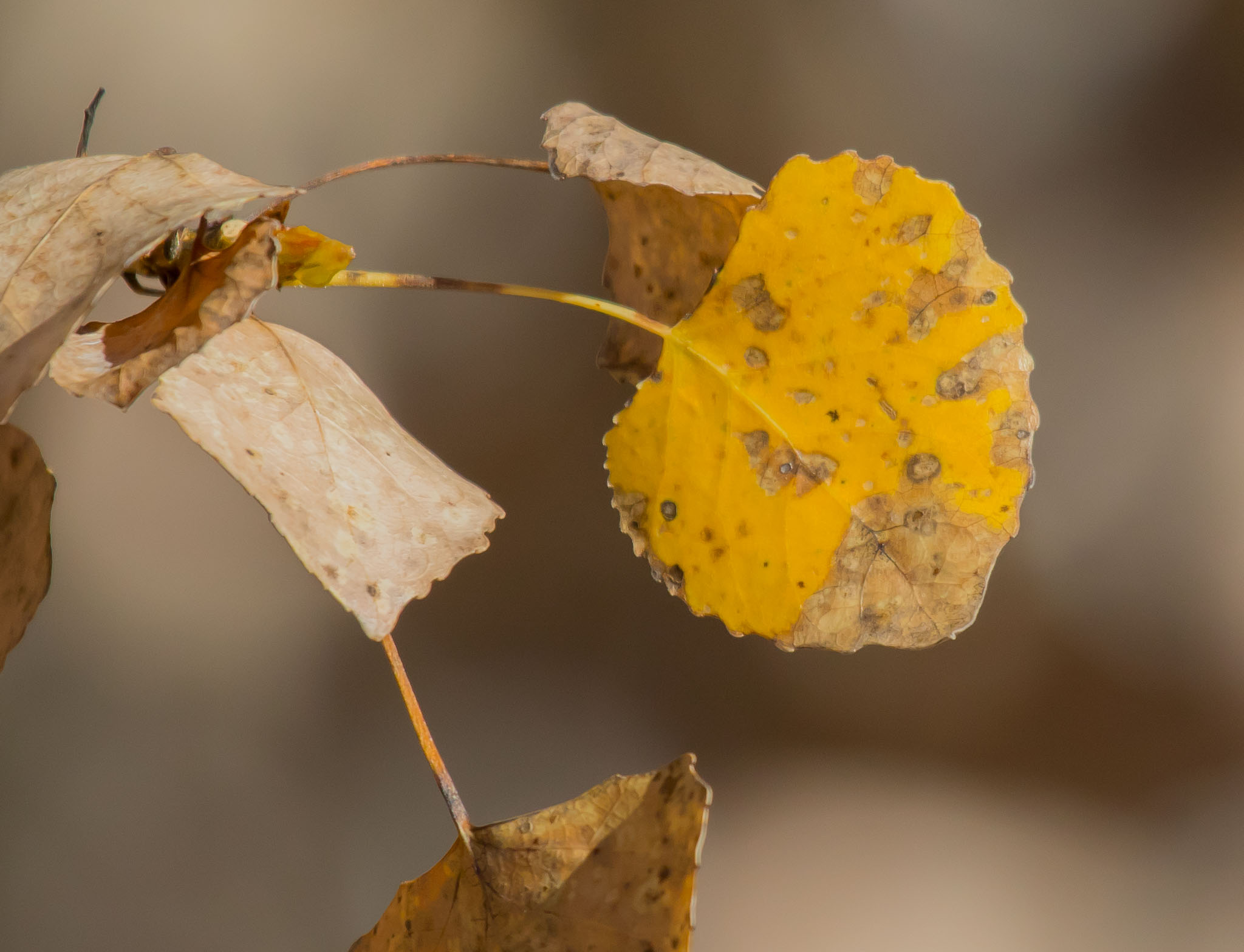
Before the Fall

Hangout

New Years Eve at the Bosque
Come Fly With Me
Vermilion Flycatcher - Young Male, Bosque del Apache National Wildlife Refuge, San Antonio NM
January 27th, 2024
This guy was having quite a tweet!
Vermilion Flycatcher
The vermilion flycatcher (Pyrocephalus obscurus) is a small passerine bird in the tyrant flycatcher family found throughout South America and southern North America. It is a striking exception among the generally drab Tyrannidae due to its vermilion-red coloration. The males have bright red crowns, chests, and underparts, with brownish wings and tails. Females lack the vivid red coloration and can be hard to identify—they may be confused for the Say's phoebe. The vermilion flycatcher's song is a pit pit pit pidddrrrreeedrr, which is variable and important in establishing a territory. Riparian habitats and semi-open environments are preferred. As aerial insectivores, they catch their prey while flying. Their several months-long molt begins in summer.
Despite being socially monogamous, vermilion flycatchers will engage in extra-pair copulation. They also practice within-species brood parasitism, whereby females lay their eggs in the nest of another individual. Females build shallow open cup nests and incubate the brown-speckled whitish eggs. The male feeds the female during incubation. Two broods of two or three eggs are laid in a season lasting from March through June. Once hatched, both males and females feed the chicks, which are ready to fledge after 15 days.
Wikipedia / Vermilion Flycatcher
Northern Pintail - Female
Bosque del Apache National Wildlife Refuge, San Antonio NM
November 11, 2019
Northern Pintail
The pintail or northern pintail (Anas acuta) is a duck with wide geographic distribution that breeds in the northern areas of Europe, Asia and North America. It is migratory and winters south of its breeding range to the equator. Unusually for a bird with such a large range, it has no geographical subspecies if the possibly conspecific duck Eaton's pintail is considered to be a separate species.
This is a large duck, and the male's long central tail feathers give rise to the species' English and scientific names. Both sexes have blue-grey bills and grey legs and feet. The drake is more striking, having a thin white stripe running from the back of its chocolate-coloured head down its neck to its mostly white undercarriage. The drake also has attractive grey, brown, and black patterning on its back and sides. The hen's plumage is more subtle and subdued, with drab brown feathers similar to those of other female dabbling ducks. Hens make a coarse quack and the drakes a flute-like whistle.
The northern pintail is a bird of open wetlands which nests on the ground, often some distance from water. It feeds by dabbling for plant food and adds small invertebrates to its diet during the nesting season. It is highly gregarious when not breeding, forming large mixed flocks with other species of duck. This duck's population is affected by predators, parasites and avian diseases. Human activities, such as agriculture, hunting and fishing, have also had a significant impact on numbers.
Wikipedia / Northern Pintail
May 2017 Rest in Peace
Bald Eagle, Bosque del Apache National Wildlife Refuge, San Antonio NM
December 31, 2017
This past year has been a trying one for Mother Earth. May 2018 bring better times.
"Young people have helped lead all our great movements. How inspiring to see again in so many smart, fearless stdents standing up for their right to be safe; marching and organizing to remake the world as it should be. We’ve been waiting for you. And we’ve got your backs."
Barack Obama
Hopefully the students of Marjory Stoneman Douglas High School can lead us to our senses and guide us in finally ending the epidemic of mass shootings across this land.
Breakfast at Dawn
White-faced Ibis, Bosque del Apache National Wildlife Refuge, San Antonio NM
October 23, 2017
The waters at the Bosque are carefully managed. The landscape is contoured in a way that allows the staff to flood what at other times are grasslands to create shallow ponds for wading birds. That’s what you see here. These White-faced Ibis are grazing at the edge of a flooded area reflecting the diffuse orange light of a rising sun.
White-faced Ibis
The white-faced ibis (Plegadis chihi) is a wading bird in the ibis family Threskiornithidae. This species breeds colonially in marshes, usually nesting in bushes or low trees. Its breeding range extends from the western United States south through Mexico, as well as from southeastern Brazil and southeastern Bolivia south to central Argentina, and along the coast of central Chile. Its winter range extends from southern California and Louisiana south to include the rest of its breeding range.
The white-faced ibis is very similar to the glossy ibis in its non-breeding plumages, but it tends to be slightly smaller and the plumage color is somewhat warmer. Breeding adults have a pink bare face bordered with white feathers (rather than a bluish bare face with no bordering feathers), a grey bill, and brighter colored, redder legs. Adults have red eyes year-round, whereas glossy ibises have dark eyes. Juveniles of the two species are nearly identical.
Wikipedia / White-faced Ibis
Flying Low
Female Northern Shoveler, Bosque del Apache National Wildlife Refuge, San Antonio NM
January 5, 2017
This Northern Shoveler just took off from the pond letting me get this nice shot lit from below by early morning sunlight reflected off the water.
Northern Shoveler Behavior
Northern shovelers feed by dabbling for plant food, often by swinging its bill from side to side and using the bill to strain food from the water. They use their highly specialized bill (from which their name is derived) to forage for aquatic invertebrates – a carnivorous diet. Their wide-flat bill is equipped with well-developed lamellae – small, comb-like structures on the edge of the bill that act like sieves, allowing the birds to skim crustaceans and plankton from the water's surface. This adaptation, more specialized in shovelers, gives them an advantage over other puddle ducks, with which they do not have to compete for food resources during most of the year. Thus, mud-bottomed marshes rich in invertebrate life are their habitat of choices.
The shoveler prefers to nest in grassy areas away from open water. Their nest is a shallow depression on the ground, lined with plant material and down. Hens typically lay about nine eggs. The drakes are very territorial during breeding season and will defend their territory and partners from competing males. Drakes also engage in elaborate courtship behaviors, both on the water and in the air; it is not uncommon for a dozen or more males to pursue a single hen. Despite their stout appearance, shovelers are nimble fliers.
This is a fairly quiet species. The male has a clunking call, whereas the female has a Mallard-like quack.
Wikipedia / Northern Shoveler
Four and Twenty
Blackbirds, Bosque del Apache National Wildlife Refuge, San Antonio NM
December 13, 2016
I took a bunch of photos of this flock of blackbirds moving from place to place in the cornfields along the Farm Loop this morning. On review this pastel composition caught my eye. There are 26 species of New World blackbirds. I have no idea how many were represented in this flock.
New World Blackbirds
The New World blackbirds consist of 26 species of icterid birds that share the name blackbird but do not correspond with a formal taxon. The distributions of all species are limited to the Americas, and this group is distinct from the Eurasian common blackbird (Turdus merula).
Wikipedia / New World Blackbird
Daybreak at the Boardwalk
American White Pelicans, Bosque del Apache National Wildlife Refuge, San Antonio NM
November 1, 2016
There wasn't a lot going on at the Bosque Boardwalk to photograph - just a few pelicans going about their morning under this stunning red sky at sunrise.
It was a good outing - I got two nice images this beautiful morning.
Call Me Frosty
American Coot, Bosque del Apache National Wildlife Refuge, San Antonio NM
January 17, 2015
I caught this American Coot gliding about the pond just as the sun rose on a cold Bosque morn.
American Coot
The American coot (Fulica americana), also known as a mud hen, is a bird of the family Rallidae. Though commonly mistaken to be ducks, American coots belong to a distinct order. Unlike the webbed feet of ducks, coots have broad, lobed scales on their lower legs and toes that fold back with each step in order to facilitate walking on dry land. Coots live near water, typically inhabiting wetlands and open water bodies in North America. Groups of coots are called covers or rafts. The oldest known coot lived to be 22 years old.
Wikipedia / American Coot
[insert snarky caption here]
Bosque del Apache National Wildlife Refuge, San Antonio NM
January 20, 2015
Canada Geese are everywhere and I seldom photograph them but these two swam by as I was photographing a Bald Eagle dining on a Snow Goose in the pond and I snapped a few shots anyway. Glad I did, the bald eagle shots were not good.
Canada Goose
The Canada goose (Branta canadensis) is a large wild goose species with a black head and neck, white patches on the face, and a brown body. Native to arctic and temperate regions of North America, its migration occasionally reaches northern Europe. It has been introduced to Britain, New Zealand, Argentina, Chile, and the Falkland Islands. Like most geese, the Canada goose is primarily herbivorous and normally migratory; it tends to be found on or close to fresh water.
Extremely successful at living in human-altered areas, Canada geese have proven able to establish breeding colonies in urban and cultivated areas, which provide food and few natural predators, and are well known as a common park species. Their success has led to them sometimes being considered a pest species because of their depredation of crops and issues with their noise, droppings, aggressive territorial behavior, and habit of begging for food, especially in their introduced range. Canada geese are also among the most commonly hunted waterfowl in North America.
Wikipedia / Canada Goose
Cooper's Hawk
Bosque del Apache National Wildlife Refuge, San Antonio NM
October 31, 2014
Be ever vigilant; you never know when dinner will appear...
Greater Roadrunner, A Portrait
Bosque del Apache National Wildlife Refuge, San Antonio NM
December 12, 2013
These guys can be such fun!
Greater Roadrunner
The greater roadrunner (Geococcyx californianus) is a long-legged bird in the cuckoo family, Cuculidae, from Southwestern United States and Mexico. The Latin name means "Californian earth-cuckoo". Along with the lesser roadrunner, it is one of two species in the roadrunner genus Geococcyx. This roadrunner is also known as the chaparral cock, ground cuckoo, and snake killer.
Wikipedia / Greater Roadrunner
Northern Shoveler, Adult Female, A Portrait
Bosque del Apache National Wildlife Refuge, San Antonio NM
December 18, 2014
The light! The light!...
Smell the Roses
Female Red-winged Blackbird and Sunflower Seed Head, Bosque del Apache National Wildlife Refuge, San Antonio NM
January 1, 2014
Red-winged Blackbirds sure are fond of these sunflower seedheads.
Red-winged Blackbird
The red-winged blackbird (Agelaius phoeniceus) is a passerine bird of the family Icteridae found in most of North and much of Central America. It breeds from Alaska and Newfoundland south to Florida, the Gulf of Mexico, Mexico, and Guatemala, with isolated populations in western El Salvador, northwestern Honduras, and northwestern Costa Rica. It may winter as far north as Pennsylvania and British Columbia, but northern populations are generally migratory, moving south to Mexico and the southern United States. It can also be seen in NWT, Canada. Claims have been made that it is the most abundant living land bird in North America, as bird-counting censuses of wintering red-winged blackbirds sometimes show that loose flocks can number in an excess of a million birds per flock and the full number of breeding pairs across North and Central America may exceed 250 million in peak years. It also ranks among the best-studied wild bird species in the world. The red-winged blackbird is sexually dimorphic; the male is all black with a red shoulder and yellow wing bar, while the female is a nondescript dark brown. Seeds and insects make up the bulk of the red-winged blackbird's diet.
Wikipedia / Red-winged Blackbird
Seedhead
Common Sunflower, Bosque del Apache National Wildlife Refuge, San Antonio NM
November 16, 2019
Common Sunflower
The plant has an erect rough-hairy stem, reaching typical heights of 3 metres (9.8 ft). The tallest sunflower on record achieved 9.17 metres (30.1 ft). Sunflower leaves are broad, coarsely toothed, rough and mostly alternate. What is often called the "flower" of the sunflower is actually a "flower head" or pseudanthium of numerous small individual five-petaled flowers ("florets"). The outer flowers, which resemble petals, are called ray flowers. Each "petal" consists of a ligule composed of fused petals of an asymmetrical ray flower. They are sexually sterile and may be yellow, red, orange, or other colors. The flowers in the center of the head are called disk flowers. These mature into fruit (sunflower "seeds"). The disk flowers are arranged spirally. Generally, each floret is oriented toward the next by approximately the golden angle, 137.5°, producing a pattern of interconnecting spirals, where the number of left spirals and the number of right spirals are successive Fibonacci numbers. Typically, there are 34 spirals in one direction and 55 in the other; however, in a very large sunflower head there could be 89 in one direction and 144 in the other. This pattern produces the most efficient packing of seeds mathematically possible within the flower head.
Wikipedia
Faded Glory
Common Sunflower, Bosque del Apache National Wildlife Refuge, San Antonio NM
October 22, 2017
Windblown.
Common Sunflower
The plant has an erect rough-hairy stem, reaching typical heights of 3 metres (9.8 ft). The tallest sunflower on record achieved 9.17 metres (30.1 ft). Sunflower leaves are broad, coarsely toothed, rough and mostly alternate. What is often called the "flower" of the sunflower is actually a "flower head" or pseudanthium of numerous small individual five-petaled flowers ("florets"). The outer flowers, which resemble petals, are called ray flowers. Each "petal" consists of a ligule composed of fused petals of an asymmetrical ray flower. They are sexually sterile and may be yellow, red, orange, or other colors. The flowers in the center of the head are called disk flowers. These mature into fruit (sunflower "seeds"). The disk flowers are arranged spirally. Generally, each floret is oriented toward the next by approximately the golden angle, 137.5°, producing a pattern of interconnecting spirals, where the number of left spirals and the number of right spirals are successive Fibonacci numbers. Typically, there are 34 spirals in one direction and 55 in the other; however, in a very large sunflower head there could be 89 in one direction and 144 in the other. This pattern produces the most efficient packing of seeds mathematically possible within the flower head.
Wikipedia / Helianthus Annuus
Above and Beyond
Bosque del Apache National Wildlife Refuge, San Antonio NM
January 25th, 2024
This day dawned quite foggy after overnight rainfall and created many beautiful views of wet foliage in the soft light of the fog.
I do not know what type of reed this is. It is common here in the perenially wet areas of the Refuge, as are cattails.
Fall Release
Bosque del Apache National Wildlife Refuge, San Antonio NM
October 29, 2016
I could use a little help identifying this wildflower. I think it may be some type of aster but really don't know what it is. I found it growing along the roadside amongst some sunflowers on the east side of the North Loop at the Bosque.
Down by the Pond
A Still Life, Bosque del Apache National Wildlife Refuge, San Antonio NM
December 26, 2013
Snow Goose down and Western Sunflower seedheads; a still life.
Before the Fall
Cottonwood Leaf, Bosque del Apache National Wildlife Refuge, San Antonio NM
November 10, 2014
Rio Grande Cottonwood
Populus deltoides, the eastern cottonwood or necklace poplar, is a cottonwood poplar native to North America, growing throughout the eastern, central, and southwestern United States, the southernmost part of eastern Canada, and northeastern Mexico. It is a eudicot.
The species is divided into three subspecies or up to five varieties. The subspecies classification is as follows:
Populus deltoides subsp. deltoides, eastern cottonwood is found in southeastern Canada (the south of Ontario and Quebec) and the eastern United States (throughout, west to North Dakota to Texas).
P. d. monilifera (Aiton) Eckenw., the plains cottonwood (syn. P. deltoides var. occidentalis Rydb.; P. sargentii Dode) ranges from southcentral Canada (southern Alberta, Saskatchewan, and Manitoba) to the central United States and south to northern New Mexico and Texas.
P. d. wislizeni (S.Watson) Eckenw., the Rio Grande cottonwood (syn. P. wislizeni (S.Watson) Sarg.; P. fremontii var. wislizeni S.Watson) grows from southern Colorado south through Texas to northeastern Mexico (Chihuahua, San Luis Potosi), and west to Arizona (presence in California, listed by GRIN, is doubtful, not included in the Jepson Flora of California). (Note: Some sources mistakenly spell the epithet "wislizenii." Correct spelling is with one "i," per ICN article 60C.2.)
It needs bare soil and full sun for successful germination and establishment; in natural conditions, it usually grows near rivers, with mud banks left after floods providing ideal conditions for seedling germination; human soil cultivation has allowed it to increase its range away from such habitats.
Wikipedia
Hangout
Bosque del Apache National Wildlife Refuge, San Antonio NM
November 15, 2015
I've often seen Bald Eagles hanging out in this photogenic tree in the past but none this fall yet. I'm pleased the Refuge cut the brush along this section of the Farm Loop making this photo possible.
New Years Eve at the Bosque
Cottonwood at Sunset, Bosque del Apache National Wildlife Refuge, San Antonio NM
December 31, 2013
Happy New Year!
